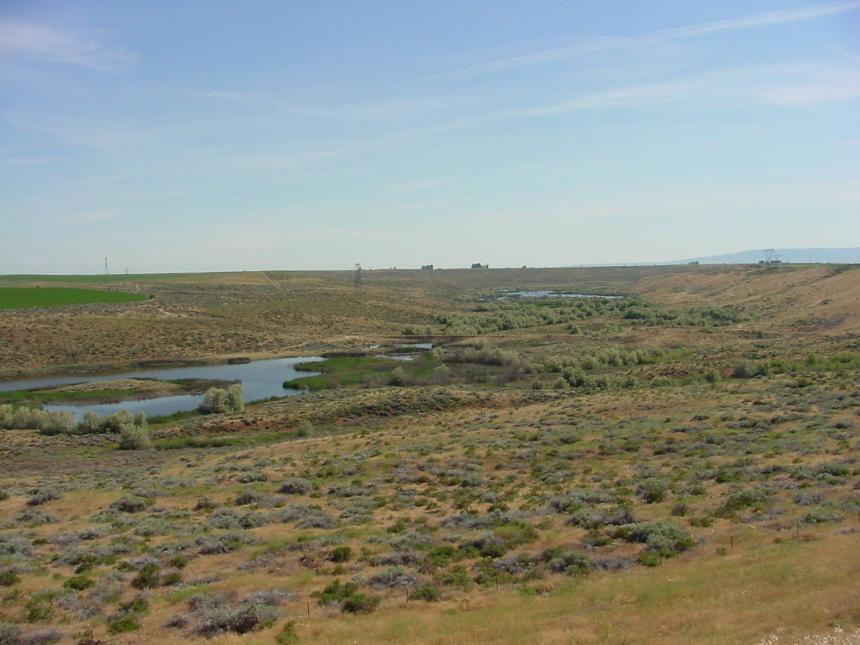The Thompson Seeps are located approximately 11.5 miles southwest of Othello, Washington in Franklin County. Thompson Seep North has an approximate surface area 15 acres, a mean depth of 6 feet, and a maximum depth of 14 feet. Lake is fed from groundwater and run-off flow from the Wahluke Branch Ten Wasteway.
North Thompson Seeps is owned by the United States Bureau of Reclamation but is managed by the Washington Department of Fish and Wildlife. Primitive roads, consisting mostly of sand and gravel, lead to the lake.
Public can access Thompson Seep North via one primitive boat launch area located on the southwest corner of the lake.
Two-pole fishing is allowed
Shoreline access: Good - Limited shoreline access
Species you might catch
Lake information
County: Franklin
Acreage: 16.20 ac.
Elevation: 812 ft.
Center: 46.688762, -119.260496
Open in Google Maps
Catchable fish plants
| Stock Date | Species | Number Released | Number of Fish Per Pound | Facility |
|---|---|---|---|---|
Visit the Catchable Trout Plants page for a more detailed search of trout plants in this or other bodies of water. To view or download the source data for this table visit the WDFW Fish Plants dataset on the Washington State Open Data Portal
Fishing prospects calendar
Largemouth bass
Walleye
Yellow perch
Black crappie
Bluegill
Pumpkinseed Sunfish
Photos
